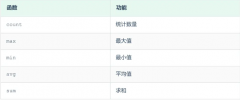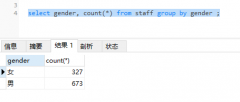Regex pattern inside SQL Replace function?(SQL Replace 函数中的正则表达式模式?)
问题描述
SELECT REPLACE('<strong>100</strong><b>.00 GB', '%^(^-?d*.{0,1}d+$)%', '');
I want to replace any markup between two parts of the number with above regex, but it does not seem to work. I'm not sure if it is regex syntax that's wrong because I tried simpler one such as '%[^0-9]%' just to test but it didn't work either. Does anyone know how can I achieve this?
You can use PATINDEX to find the first index of the pattern (string's) occurrence. Then use STUFF to stuff another string into the pattern(string) matched.
Loop through each row. Replace each illegal characters with what you want. In your case replace non numeric with blank. The inner loop is if you have more than one illegal character in a current cell that of the loop.
DECLARE @counter int
SET @counter = 0
WHILE(@counter < (SELECT MAX(ID_COLUMN) FROM Table))
BEGIN
WHILE 1 = 1
BEGIN
DECLARE @RetVal varchar(50)
SET @RetVal = (SELECT Column = STUFF(Column, PATINDEX('%[^0-9.]%', Column),1, '')
FROM Table
WHERE ID_COLUMN = @counter)
IF(@RetVal IS NOT NULL)
UPDATE Table SET
Column = @RetVal
WHERE ID_COLUMN = @counter
ELSE
break
END
SET @counter = @counter + 1
END
Caution: This is slow though! Having a varchar column may impact. So using LTRIM RTRIM may help a bit. Regardless, it is slow.
Credit goes to this StackOverFlow answer.
EDIT Credit also goes to @srutzky
Edit (by @Tmdean) Instead of doing one row at a time, this answer can be adapted to a more set-based solution. It still iterates the max of the number of non-numeric characters in a single row, so it's not ideal, but I think it should be acceptable in most situations.
WHILE 1 = 1 BEGIN
WITH q AS
(SELECT ID_Column, PATINDEX('%[^0-9.]%', Column) AS n
FROM Table)
UPDATE Table
SET Column = STUFF(Column, q.n, 1, '')
FROM q
WHERE Table.ID_Column = q.ID_Column AND q.n != 0;
IF @@ROWCOUNT = 0 BREAK;
END;
You can also improve efficiency quite a lot if you maintain a bit column in the table that indicates whether the field has been scrubbed yet. (NULL represents "Unknown" in my example and should be the column default.)
DECLARE @done bit = 0;
WHILE @done = 0 BEGIN
WITH q AS
(SELECT ID_Column, PATINDEX('%[^0-9.]%', Column) AS n
FROM Table
WHERE COALESCE(Scrubbed_Column, 0) = 0)
UPDATE Table
SET Column = STUFF(Column, q.n, 1, ''),
Scrubbed_Column = 0
FROM q
WHERE Table.ID_Column = q.ID_Column AND q.n != 0;
IF @@ROWCOUNT = 0 SET @done = 1;
-- if Scrubbed_Column is still NULL, then the PATINDEX
-- must have given 0
UPDATE table
SET Scrubbed_Column = CASE
WHEN Scrubbed_Column IS NULL THEN 1
ELSE NULLIF(Scrubbed_Column, 0)
END;
END;
If you don't want to change your schema, this is easy to adapt to store intermediate results in a table valued variable which gets applied to the actual table at the end.
这篇关于SQL Replace 函数中的正则表达式模式?的文章就介绍到这了,希望我们推荐的答案对大家有所帮助,也希望大家多多支持编程学习网!
本文标题为:SQL Replace 函数中的正则表达式模式?


- 更改自动增量起始编号? 2021-01-01
- 导入具有可变标题的 Excel 文件 2021-01-01
- 在SQL中,如何为每个组选择前2行 2021-01-01
- 以一个值为轴心,但将一行上的数据按另一行分组? 2022-01-01
- 如何使用 pip 安装 Python MySQLdb 模块? 2021-01-01
- 如何将 SonarQube 6.7 从 MySQL 迁移到 postgresql 2022-01-01
- 远程 mySQL 连接抛出“无法使用旧的不安全身份验证连接到 MySQL 4.1+"来自 XAMPP 的错误 2022-01-01
- 如何将 Byte[] 插入 SQL Server VARBINARY 列 2021-01-01
- SQL 临时表问题 2022-01-01
- 使用 Oracle PL/SQL developer 生成测试数据 2021-01-01









